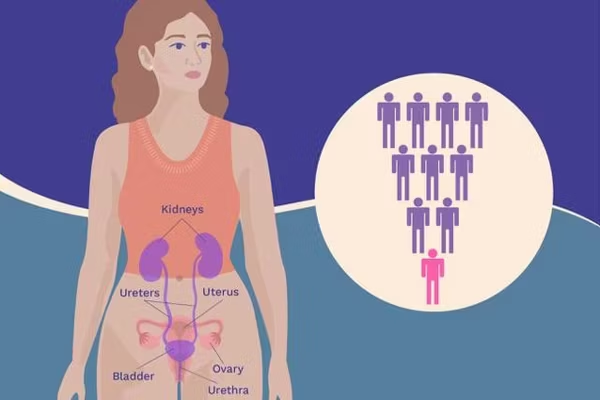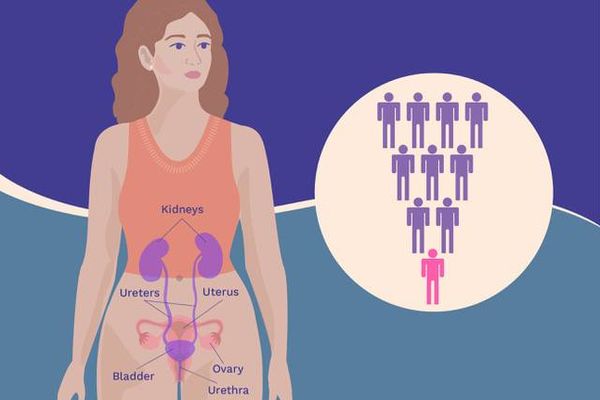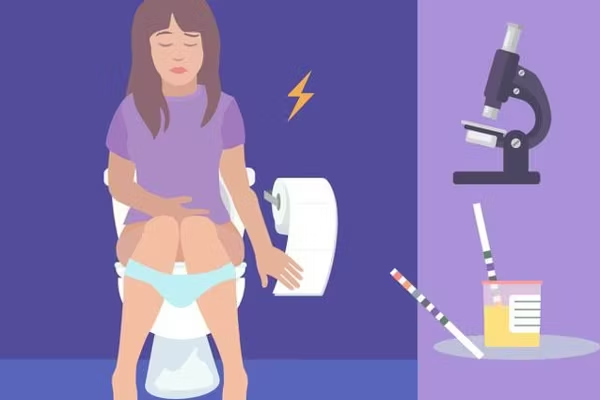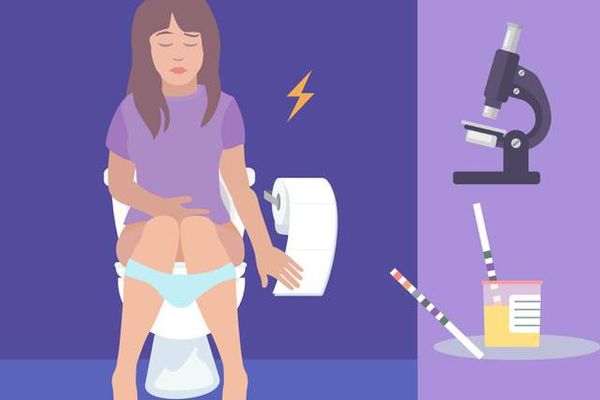This educational resource was sponsored by Poise, a brand of Kimberly-Clark. Other Kimberly-Clark brands include Depend and Thinx for All Leaks. Poise and Depend are registered trademarks of Kimberly-Clark. Thinx for All Leaks is a trademark of Kimberly-Clark.
Slide 1
Did You Know There Are Different Types of Bladder Leakage?
Slide 2
Bladder leakage is really common.
Did you know that 1 in 2 women will deal with urinary incontinence (bladder leakage) at some point in their lives.
Each type of bladder leakage has different symptoms. And each type of leakage can be managed in different ways.
Slide 3
Stress incontinence
- Your bladder leaks when pressure is put on it
- Examples of this kind of pressure include coughing, sneezing, laughing, exercising or having sex
Slide 4
Urge incontinence/Urgency incontinence
- You feel a sudden, urgent need to pee and then lose control of your bladder
- You may need to pee frequently, including at night
- This can be caused by an overactive bladder (OAB)
Slide 5
Overflow incontinence
- Your bladder doesn’t empty completely
- You experience frequent or even constant dribbling
Slide 6
Functional incontinence
- You aren’t able to get to the toilet in time because of a health condition or obstacle
- For example, arthritis or Parkinson’s disease may prevent you from moving quickly enough, or something may be blocking your way to the bathroom
Slide 7
Mixed incontinence
- You have a combination of stress incontinence and urge incontinence
- A mix of stress incontinence and urge incontinence is most common
Slide 8 & 9
Bladder leakage can often be managed or treated
The options to treat or manage your bladder leakage depend on what type of incontinence you have.
Options include:
- Bladder leakage products that help absorb leakage and control odor
- Pads (like Poise)
- Underwear (like Depend and Thinx for All Leaks)
- Diet and lifestyle changes to avoid food or drinks that irritate your bladder
- Bladder training to condition your bladder to hold more urine
- Pelvic floor therapy to strengthen and retrain muscles that control the bladder
- Medications that calm an overactive bladder and relax bladder muscles
- Surgical & non-surgical procedures that help control leakage
Slide 10
Questions about bladder leakage? Talk to your healthcare provider (HCP), who can help you make a plan that meets your needs.
- How to Know if You Have Urinary Incontinence ›
- What You Need to Know About Urinary Incontinence ›
- Bladder Leakage During Sex ›
- FAQs About Bladder Leakage ›
- How to Not Let Light Bladder Leakage Hold You Back ›







